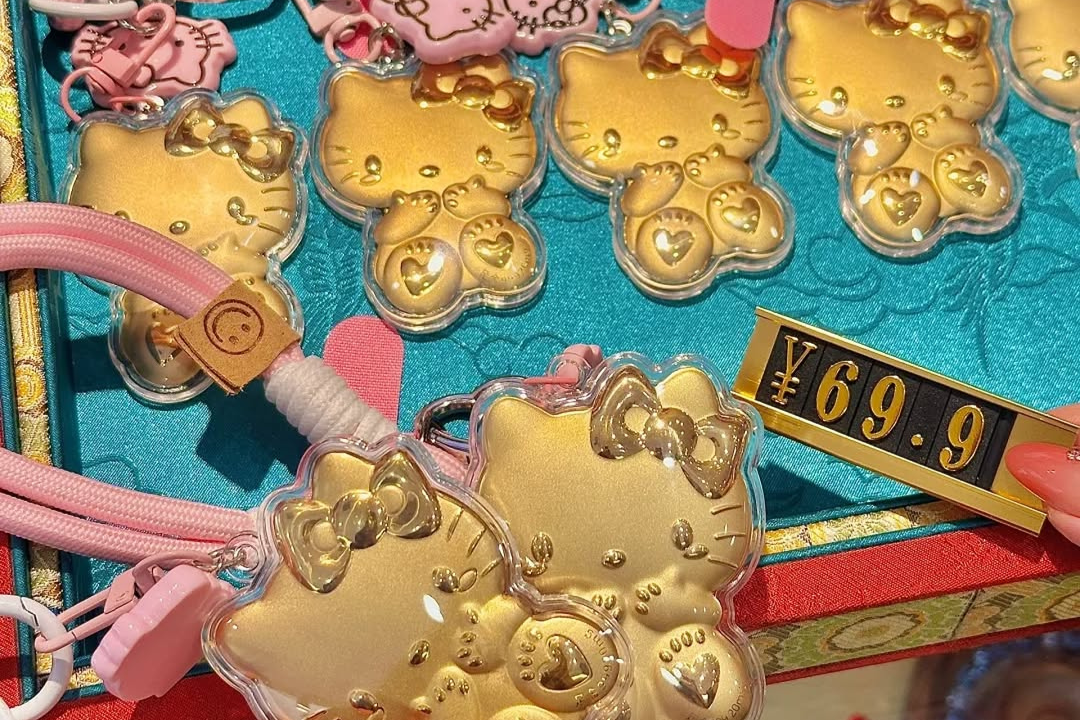Abstinent Prince’s Overbearing Love, Wealthy CEO Became My Trophy Husband, and I Became the Tycoon’s Pawn After Accidental Marriage were some of the most popular entertainment titles of 2024 in China. The stories are thrilling, filled with revenge porn, taboo relationships, family drama, and gangster romance. But you won’t find these titles at the cinema or on a TV screen: they are all Chinese microdramas, short videos between one and five minutes long, tailor-made to stream on the small screen of the smartphone.
With alluring titles and an imaginative plot, it’s not hard to see why microdramas — or duanju (短剧) — have netizens hooked. A thriving ecosystem surrounding microdramas has sprung up since the format gained public attention in 2018. They are professionally produced short-form dramas, with a season usually running for around 30 to 100 episodes. Some are adapted from web novels, while others are based on original scripts. Versions of the same script will often be filmed with different casts, allowing the audience to experience the story with slight variations. Some are free to watch, while others cost between 1 to 2 RMB (less than 30 cents USD) per episode. Microdramas are usually produced for short-video platforms like Douyin (the Chinese equivalent of TikTok) and Kuaishou.
The microdrama industry took off during the pandemic. 12,000 microdrama companies were registered in 2020 alone, compared to 6,000 in the previous year. The National Radio and Television Administration — a government body in China that regulates radio, television, and online content —introduced microdrama regulations in 2020, ending the format’s “Wild West” era. The new restrictions largely follow the same standards as traditional TV dramas, prohibiting vulgar, violent, and explicit content. In January of this year, Douyin removed 585 microdramas, most of which were intercepted during the review stage, citing vulgarity and improper values.
In a 2024 report by the China Netcasting Services Association, the microdrama industry was found to have reached a market value of 37.4 billion RMB (5.1 billion USD) in 2023, a 267.65% increase from the previous year. In 2024, microdramas earned an estimated total revenue of 50.5 billion RMB (6.9 billion USD), surpassing a box office of 47 billion RMB (6.3 billion USD). This was the first time that microdramas surpassed China’s traditional film box office. The industry skyrocketed in 2023, and continues to grow today.
As microdramas have become more popular, leading brands have jumped on the bandwagon. In 2024, 45% of advertisers conducted brand marketing through microdramas. Last year, Douyin collaborated with Starbucks on the microdrama I Opened a Starbucks in Ancient Times. Similarly, McDonald’s introduced Rebirthed to Practice Delicious Magic at McDonald’s, and KFC responded with Don’t Offend the Rebirthed Foodie Queen.
Chinese Microdramas Heat Up: Bigger Budgets, Fiercer Competition
Wu Wei, an actor residing in the southeastern Chinese city of Hengdian, has starred in over 100 microdramas since 2023. He tells RADII that in 2025, the industry has begun to shift its focus from vertical to horizontal, which requires more funding from investors. Long-video streaming platforms have also picked up the trend: Tencent, Youku, iQiyi, and Mango TV have all funded their own horizontal microdramas since 2020. The productions from these bigger media companies stand out for their higher production quality, and the ability to hire famous actors.
The microdrama industry has become more competitive as investors have rushed in since 2023. Wang Shan, Deputy Secretary-General of the 14th Beijing International Internet Film Festival, told RADII that the microdrama market has shifted from a largely unexplored territory to one filled with cutthroat rivalries. “As more investors get involved and production costs for microdramas continue to rise,” she said, “it’s common for production costs to go above one million [RMB – about $137,000 USD].” Wang continued,“After the government started restricting subject matter, and as production costs increased, microdramas have not been as profitable as before” — despite what official data may say.
Wu estimates that in 2023, there were more than 300 production teams in Hengdian, but this decreased to around 200 in 2024. Still, compared to traditional dramas, the microdrama industry has significantly lower entry barriers, capital requirements, and risk. “If you invest 100 million into a traditional drama, there’s a good chance of losing all the money,” Wu told RADII. “But 100 million can be divided into thirty to fifty microdramas. Diversification reduces risk.”
Hengdian, nicknamed China’s Hollywood, has permanent sets depicting modern and ancient China, and more than 200,000 extras on site. In recent years, however, the central city of Xi’an has replaced Hengdian as the main hot spot.
In 2023, 60% of all microdramas were filmed in Xi’an. That number dropped to 22% in 2024, as other cities joined in, but Xi’an held on to the largest percentage. A microdrama studio located in the Fengxi Xincheng area of Xi’an is one of the most popular filming locations available for rent, with 30,000 props and 150 handcrafted sets taking up over 15,000 square meters. One studio manager explained in an interview with Chinese outlet Sohu.com that an hourly rental only runs 300 RMB ($41 USD), a much lower rental rate compared to Hengdian.
The rise of microdramas has also boosted related businesses, and created fresh opportunities for industry professionals.
Wang of the Beijing International Internet Film Festival explained that when she filmed in Xi’an, “the cast and crew needed somewhere to eat and stay…so we booked out the hostel next door.” In other cities, abandoned mines, remote museums, unfinished buildings, and real estate model apartment units have been repurposed into filming locations. Microdrama actor Wu told RADII: “It’s difficult for those who did not graduate from acting school to find a job unless you have strong connections or wealth. But microdramas gave us a lot of upward mobility. I’ve played as the protagonist, the antagonist… everything.”
Microdramas are Fast and Addictive, and Tap Into New Audiences
Instant gratification, convenient vertical viewing, and easy access across different platforms reflect the fast-paced digital age — meeting consumers where they are. In terms of plot, microdramas depart from traditional Chinese dramas with exaggerated scenarios, plot twists, and cliffhangers. Every few seconds, the audience is provided with a hit of adrenaline and dopamine, incentivizing them to click to the next episode. Before you know it, the free episodes are over and the remaining must be paid. Impulsive purchases are encouraged.
Microdramas also target an older market, with audiences over 50 representing close to half of the total viewership. One of the most-viewed microdramas in 2024 was My Flash Marriage Husband Is Rich. It tells the story of a poor, middle-aged, single mother, who saves a girl suffering from a medical emergency. She marries her father “by chance,” only to discover that he’s extremely wealthy, and that the girl is her long-lost biological daughter. Stories of in-law troubles and difficult family dynamics are also common. They closely resonate with the older generation, who are willing to pay for representation.
Cover image of My Flash Marriage Husband Is Rich, image via Douban.
According to the China Netcasting Services Association, third-tier cities and below represent over 65% of the total microdrama consumers, and those with an income of 3,000 RMB ($410 USD) and below represent 48%. Perhaps that’s another reason why stories of coming into fortune and power are so popular among viewers in cities with fewer socioeconomic advantages.
Wu believes that those who consume microdramas are the same group of people who pirate movies: “Spending money for streaming platforms and movie tickets is expensive; pirating is much cheaper, and so is paying one to two RMB for a microdrama,” he explained. Microdramas are easily accessible entertainment for those living in rural areas, far away from movie theaters. They provide people with lower income an opportunity to spend money and participate as consumers. Wu summarized microdramas’ popularity as “impulsive purchases, ease of access, and being represented.” This short-video format has tapped into a new demographic of consumers and filled a previous void, proving that rural aunties and uncles are a purchasing power to be reckoned with.
Over the recent Chinese New Year holiday, Douyin introduced Spring Festival microdrama specials, inviting not only microdrama actors but also well-known celebrities. However, none of them performed better than regular microdrama releases. It seems that the audience no longer relies on famous actors, directors, or screenwriters as an indicator of the drama’s quality.
Screenshot of microdramas from the Kuaishou App
The Future of Chinese Microdramas: AI, Hollywood, and Global Expansion
There are positive indicators that microdramas are here to stay. In 2024, a microdrama-themed competition reality show generated positive reviews online, reimagining popular dramas with microdrama actors. Studios have also experimented with generating entire microdramas with the help of AI, greatly reducing production costs. Mainstream filmmakers, actors, and screenwriters have joined the microdrama craze, including big names likeHong Kong filmmaker Stephen Chow and the controversial screenwriter Yu Zheng, who has churned out a steady stream of historical romances despite plagiarism scandals.
Microdramas have also spread overseas to the American market, distributed by Chinese-backed apps such as ReelShort and DramaBox. These microdramas are filmed in English, using foreign actors and topics localized to the Western audience — but they still retain the cliché tropes popularized by their Chinese counterparts.
Cover edited with images via Douban.
















